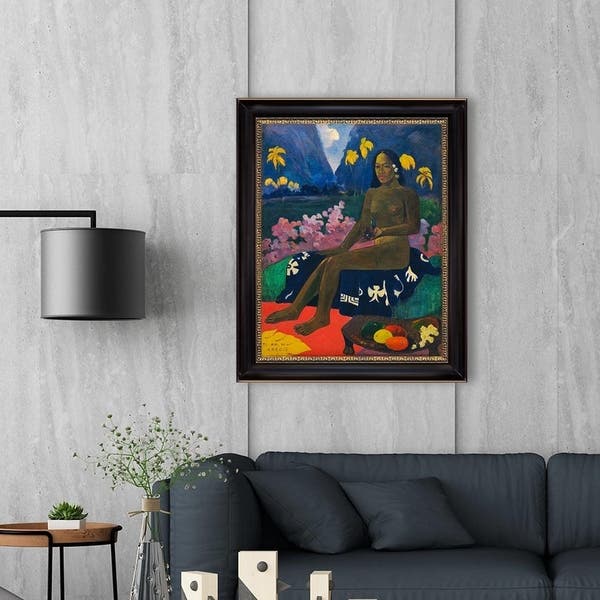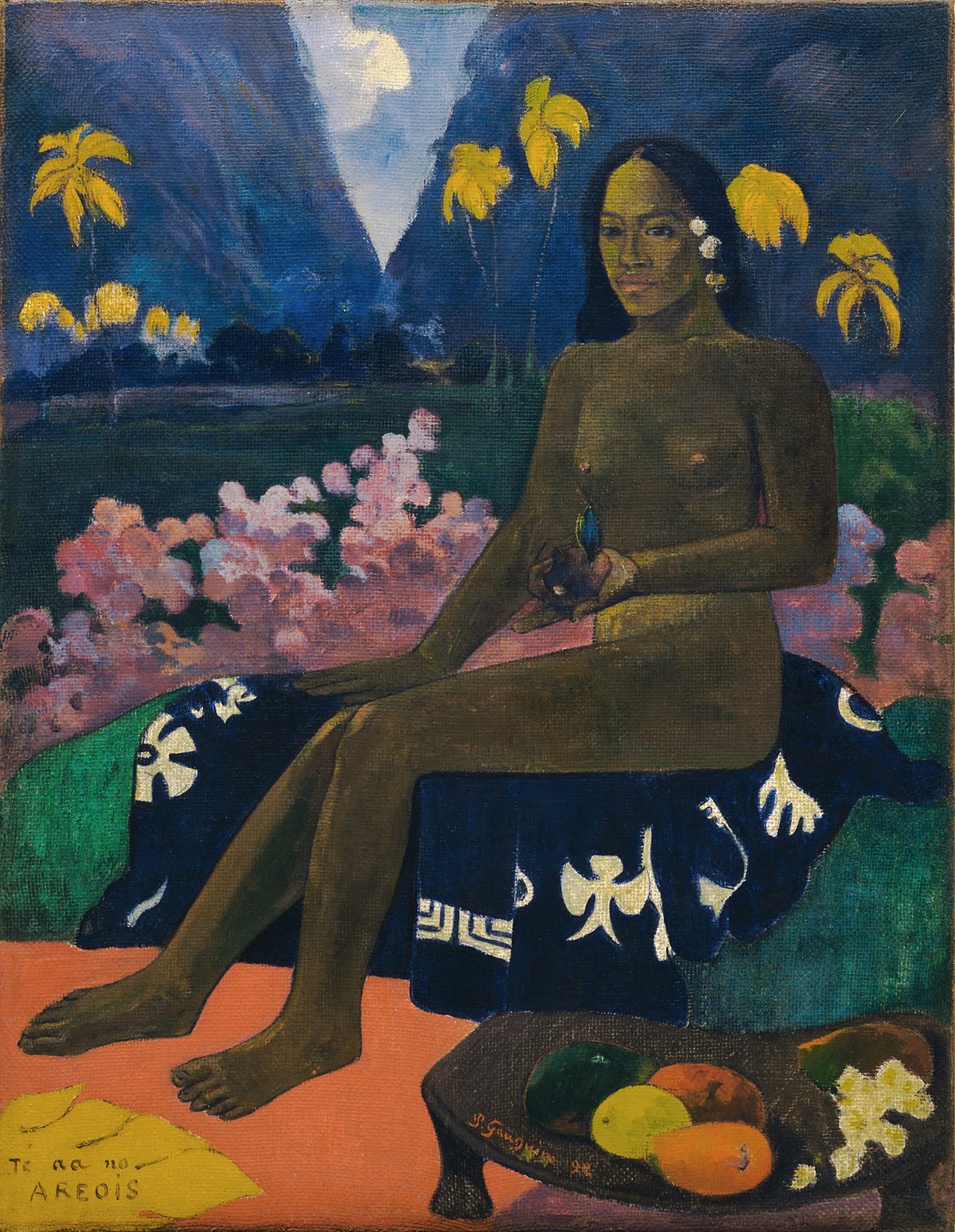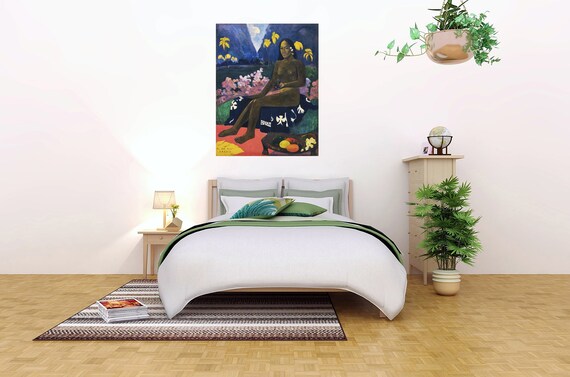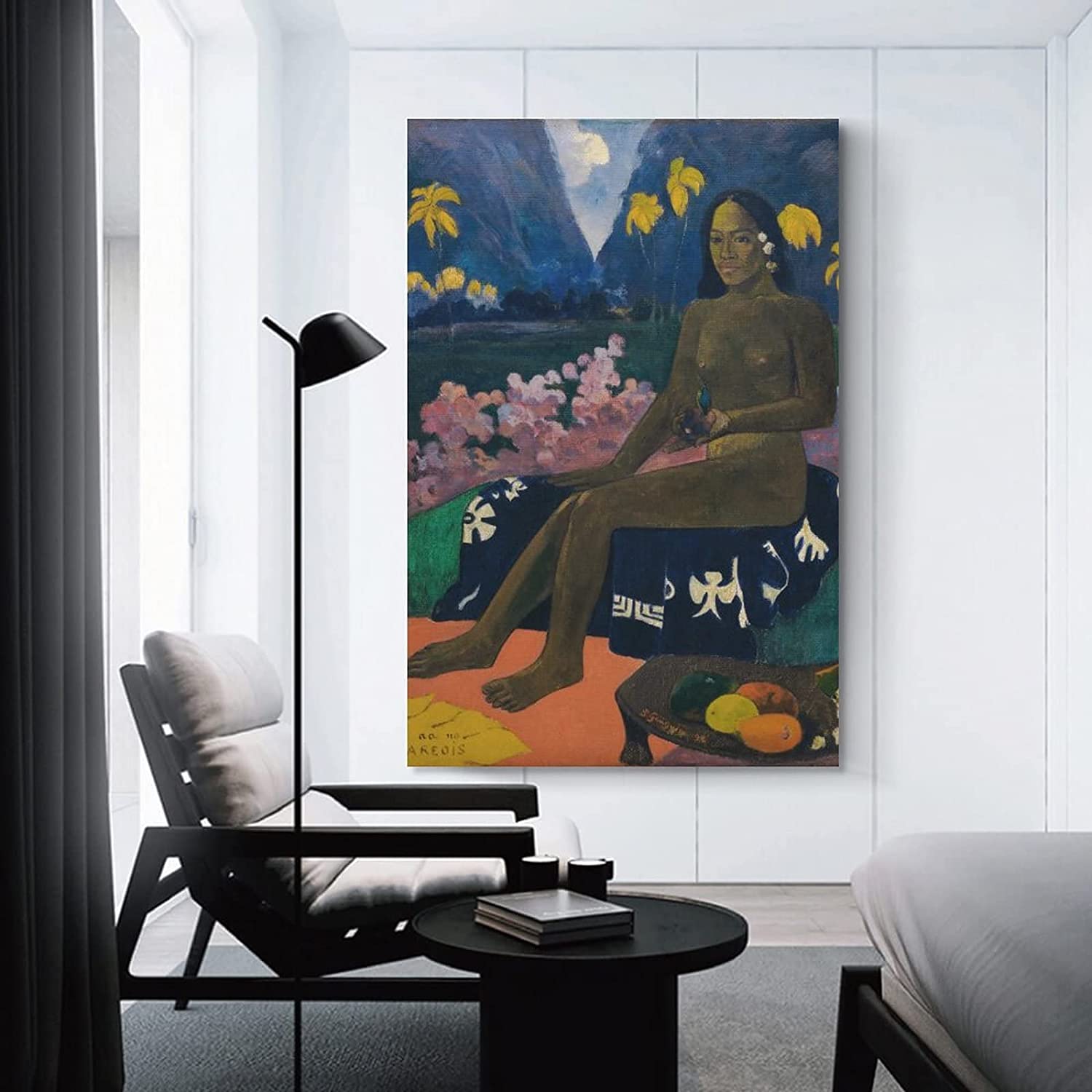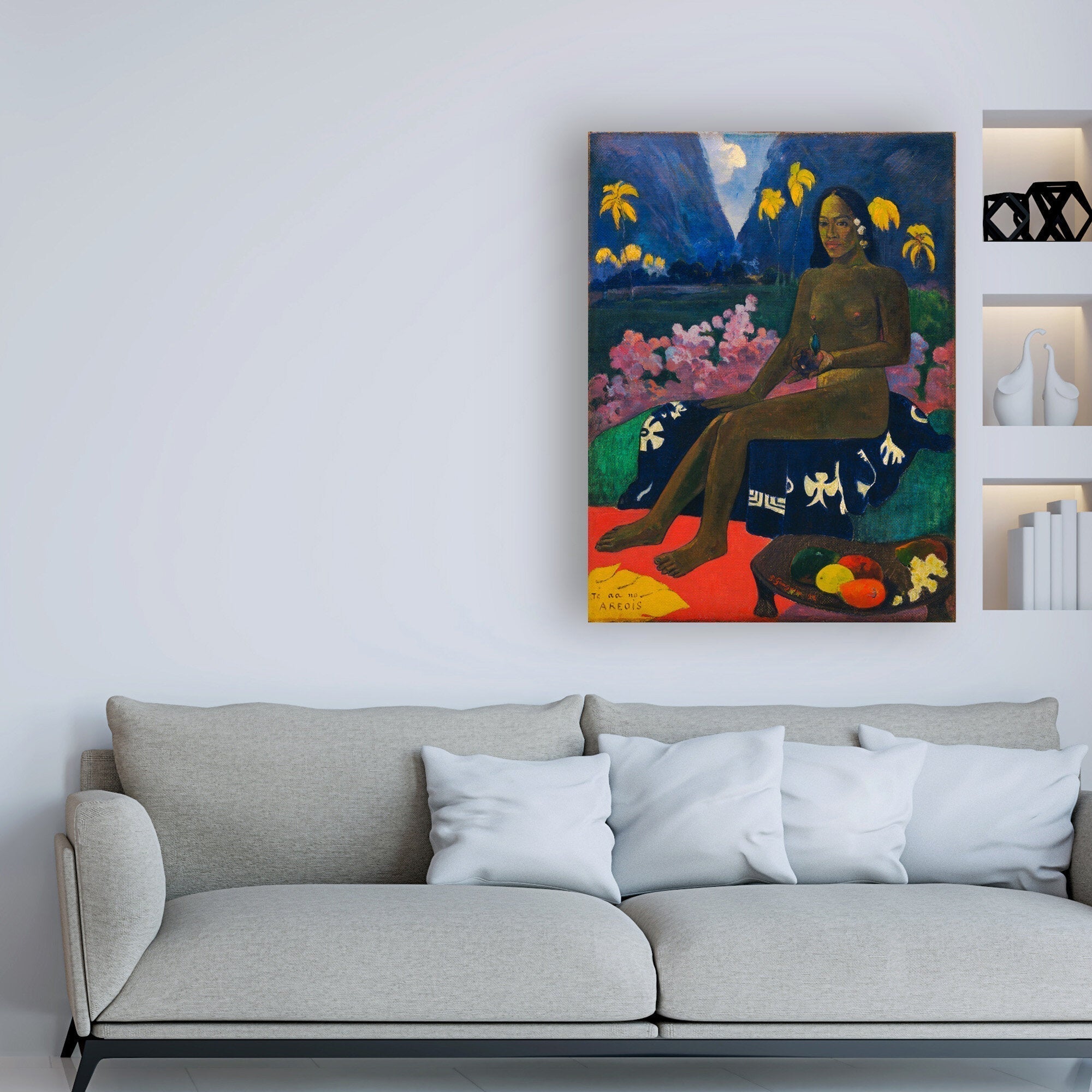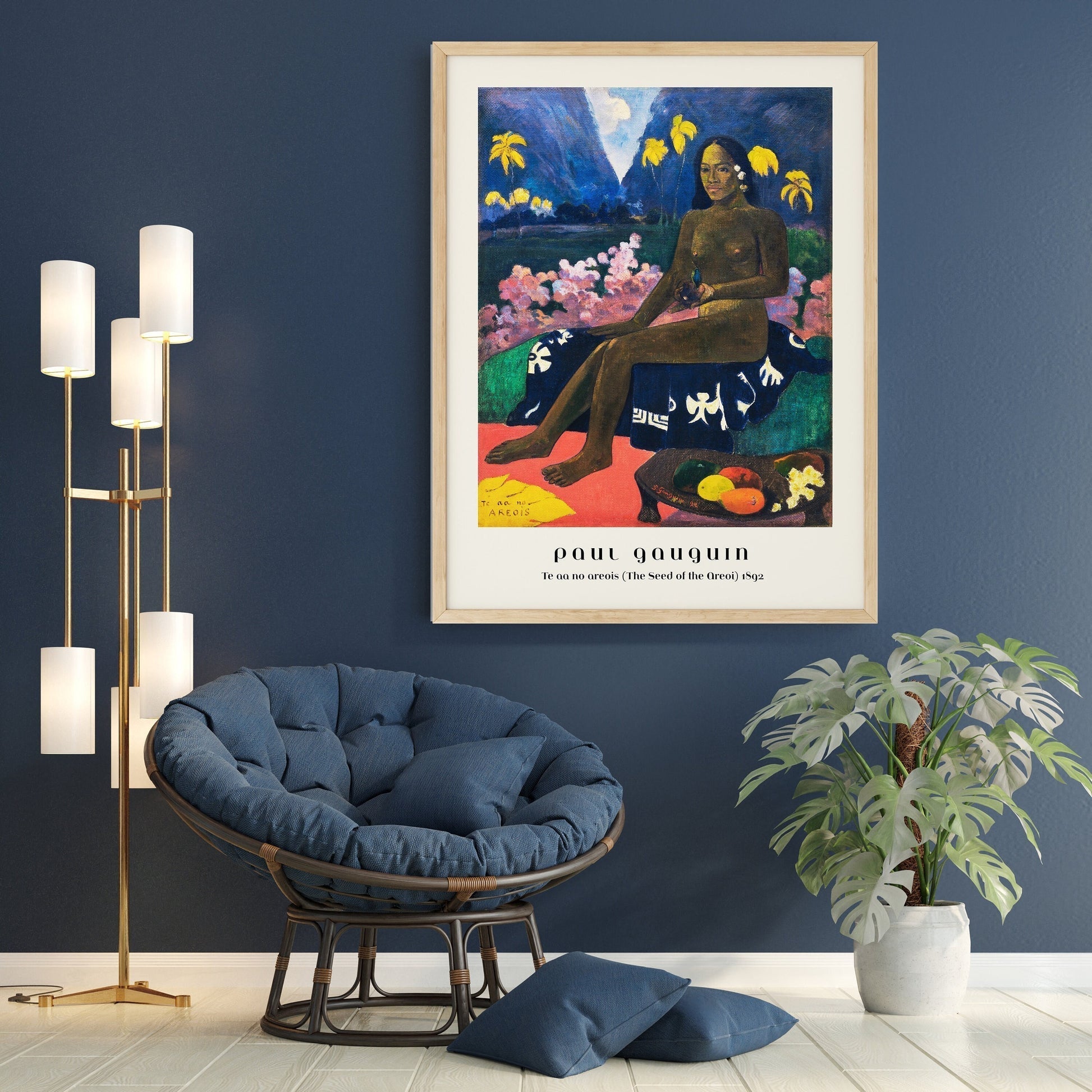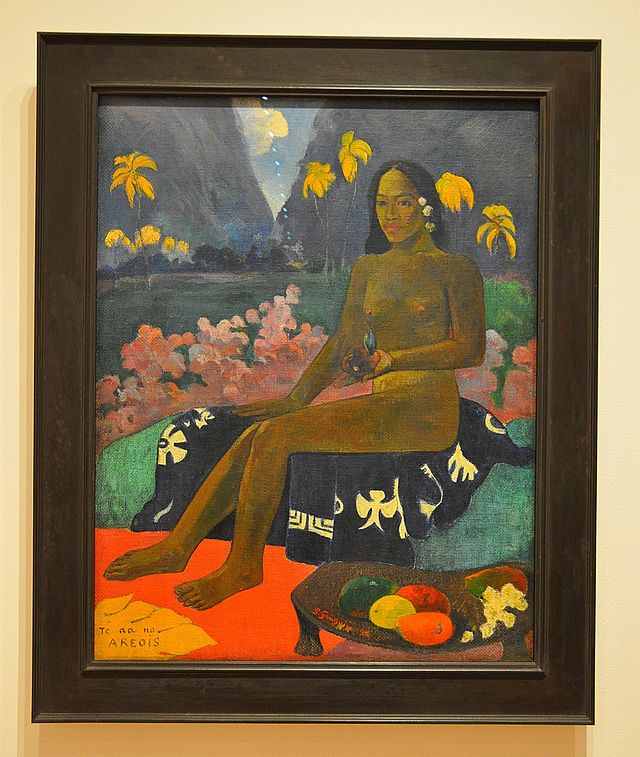Description
The painting "The Seed of the Areoi" by Paul Gauguin is an iconic piece of art that reflects his fascination with culture and life in Polynesia. It was created in 1892 and is currently in the Musée d'Orsay in Paris.
Here, a young Polynesian woman sits on a blue and white cloth. Gauguin's style fuses several non-European sources: Ancient Egyptian (in the hieratic posture), Japanese (in the relative absence of shadows and modeling and in the areas of flat color), and Javanese (in the position of the arms, influenced by a relief in the Borobudur temple of Indonesia).
The painting displays a combination of elements from Polynesian culture and the artist's imagination. Gauguin created this work after spending several years living in Tahiti, where he was drawn to the Polynesian culture and lifestyle. The painting shows a scene where several nude Polynesian women are represented, some of them with seeds in their hands, in the middle of a lush and tropical landscape.
The painting is also interesting because it has a symbolic and mystical meaning that reflects Gauguin's fascination with Polynesian culture and religion. The seeds seen in the painting symbolize fertility and regeneration, while the naked women represent purity and innocence. Gauguin was interested in Polynesian religion and mythology, and this painting is a representation of his exploration of these ideas.
Furthermore, the painting is notable for its style and technique, which combines the use of contrasting, vibrant colors with streamlined, simplified forms. Gauguin also experimented with etching and carving techniques to create textures and patterns in the painting, giving it a unique three-dimensional look. All of this makes "The Seed of the Areoi" a fascinating and complex work of art, and a showcase of Gauguin's unique style and artistic vision.
The Seed Of The Areoi is ranked no. 90 on the list of famous paintings

